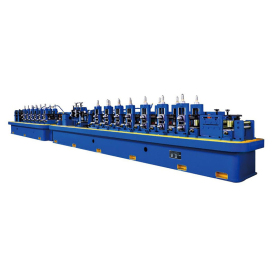[High frequency welder for plastic]High Frequency Welder for Plastic: Revolutionizing Manufacturing Processes in the Plastics Industry
In an era where efficiency and precision are paramount, industries are continually seeking innovative solutions to enhance their production methodologies. One such solution that has gained significant traction is the use of high frequency welders for plastic. This advanced technology is not only transforming traditional manufacturing processes but also setting new standards in quality and reliability within the plastics sector.

High Frequency Welder for Plastic: Revolutionizing Manufacturing Processes in the Plastics Industry

High Frequency Welder for Plastic: Revolutionizing Manufacturing Processes in the Plastics Industry
High frequency welding, also known as radio frequency welding or dielectric welding, is a process that uses electromagnetic energy to bond plastic materials together. This method is particularly effective for thermoplastic materials, which are widely used across various applications, from packaging to automotive components. The high frequency welder generates electrical fields that create molecular friction at the interface of the materials to be joined, causing them to melt and fuse seamlessly.
One of the key advantages of high frequency welding is its ability to produce strong, durable joints without the need for additional adhesives or mechanical fasteners. This eliminates several complications associated with conventional welding methods, such as inconsistent joint quality and lengthy curing times. By streamlining the bonding process, manufacturers can significantly reduce cycle times, thereby increasing overall productivity.
Moreover, high frequency welders for plastic are designed with precision and versatility in mind. They can accommodate a wide range of plastic materials, including PVC, polyurethane, and polyethylene, making them suitable for numerous applications. Industries can implement this technology in the production of everything from inflatable products, like boats and pool floats, to medical devices and automotive interiors. The ability to weld complex shapes and structures further enhances the adaptability of this welding method.
Environmental considerations have also played a crucial role in the adoption of high frequency welding in the plastics industry. Traditional welding and bonding techniques often involve the use of harmful chemicals or release volatile organic compounds (VOCs) during the process. In contrast, high frequency welding is a clean and efficient process that minimizes waste and energy consumption. This makes it an attractive option for manufacturers looking to reduce their environmental footprint and adhere to increasingly stringent sustainability regulations.
In addition to its manufacturing benefits, high frequency welding also offers significant economic advantages. By increasing production speed and reducing material waste, manufacturers can achieve a quicker return on investment. Furthermore, the durable and reliable joints produced through high frequency welding reduce the likelihood of product failures, resulting in fewer warranty claims and improved customer satisfaction.
As technology continues to advance, high frequency welders are becoming more sophisticated, with features such as automated processes, enhanced control systems, and user-friendly interfaces. These innovations make it easier for manufacturers to incorporate high frequency welding into their existing operations, providing more opportunities for optimization and efficiency gains.

High Frequency Welder for Plastic: Revolutionizing Manufacturing Processes in the Plastics Industry
Training and education are vital components of successfully implementing high frequency welding technology. As with any advanced manufacturing process, understanding the nuances of the equipment and materials is essential for achieving optimal results. Manufacturers should invest in training programs for their staff to ensure that they are equipped with the knowledge and skills necessary to operate high frequency welders effectively. Additionally, working with experienced suppliers and consultants can help streamline the transition to this modern welding method.
In conclusion, the introduction of high frequency welders for plastic is reshaping the landscape of the plastics manufacturing industry. With their ability to deliver strong, durable joints efficiently and with minimal environmental impact, high frequency welding presents a compelling solution to many of the challenges faced by manufacturers today. As industries continue to evolve and adapt to changing market demands, embracing such innovative technologies will be integral to staying competitive in an increasingly dynamic world. By prioritizing efficiency, sustainability, and quality through the adoption of high frequency welding, manufacturers can forge a successful path forward.Impedor
